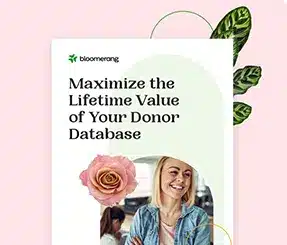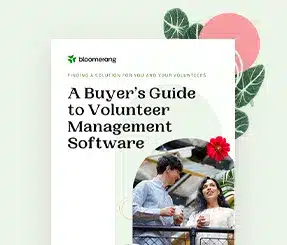[ASK AN EXPERT] If you can’t call and thank every donor, who should be priorities?


Full Platform Overview Chat With Us



Full Platform Overview Chat With Us




Our Ask An Expert series features real questions answered by Claire Axelrad, J.D., CFRE, our very own Fundraising Coach, also known as Charity Clairity.
Dear Charity Clairity,
I know calling donors to thank them is a good idea. But as a practical matter this seems awfully time consuming, especially for a small shop. If you can’t call everyone, who is best to call?
— Can’t afford the time
Dear Can’t afford the time,
This is one of those instances where you can’t afford NOT to find the time.
In fact, probably no other activity has such a big bang for your buck.
I’d encourage you to think of thank you calls as not just “nice” to do, but “essential” to do.
If you’re a small charity, and receive just a few gifts a day, you could reasonably call every donor.
These are quick, pure thank you’s and don’t take a lot of your time. Leaving a message is fine too. You just want to establish trust – the foundation of all lasting relationships – showing donors you received their gift, appreciate it, and will put it right to work as per their intention.
Thank you phone calls have the effect of closing the loop, helping to keep alive the warm glow people experience when making a gift. They also have the effect of differentiating your organization from others – in a good way. Because, despite all the research showing such calls increase donor retention and the size of future gifts, most nonprofits still aren’t doing it. Your prompt, personal touch will be appreciated. There’s no downside.
Of course, I’ve worked places that receive 50+ gifts a day. You probably can’t call all those donors. [NOTE: I’ve wondered about doing an experiment where you hire a dedicated staff member specifically to make these daily calls; then track results to see if the investment paid off in higher percentages of renewals and larger repeat gifts. You’d probably need to commit to doing this for at least three years to track how the lifetime value of donors called began to exceed that of donors not called. I would caution against hiring an outside call service center to do this. You want an insider, who lives and breathes the mission (as opposed to simply reading a script), and who can make a personal connection. Someone donors could call back with questions if they wanted to.]
Consider which segments of your donor base have potential to be loyal, but are giving at levels where they don’t get much personal attention.
“Who” will be different for every organization. Make who you call a policy so you stick to it. That way, you can track whether donors who received calls renewed at higher rates (or dollar amounts) than donors who were not called.
EXAMPLE: International Rescue Committee tested calls to donors giving $100 to $149, dividing them into three groups:
They found calls made within six weeks of the donation had the greatest impact. Those called by refugees increased by 16%; by staff, 5%.
EXAMPLE: At my last in-the-trenches job, staff randomly called one in five donors giving between $250 and $999. The goal was to see if the outcome merited assigning staff resources to call all of these donors in the future. (Alas, I left the organization before the test was completed.) Think about what you could test.
EXAMPLE: Run a report to find the average gift of your mid-level donor cohort, however you define them. Make a plan to call anyone who gave a gift above this average.
I hope this helps you figure out who you’ll call so you’ll carve out the time. You can afford it!
— Charity Clairity
Comments
Kristen Hay
Tressa Brondyke